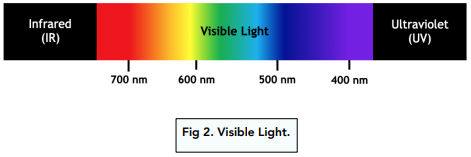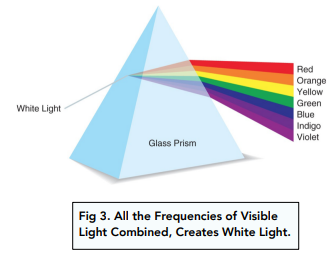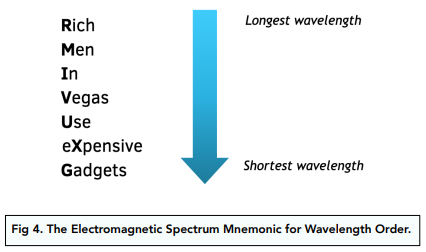Electromagnetic Spectrum (GCSE Physics)
Electromagnetic Spectrum
Defining Electromagnetic Waves
We can define electromagnetic waves in the following way.
Electromagnetic waves form a continuous spectrum and all types of electromagnetic wave travel at the same velocity through a vacuum (space) or air.

EM Energy Transfers
- The electromagnetic spectrum is formed of waves. It is formed of specifically transverse waves. Since the it is formed of waves, the spectrum will have the properties of waves.
- Energy is transferred from a source to an absorber. Waves transfer energy and not matter.
An EM Energy Transfer Example
The commonest example of an EM wave transfer is the example of visible light.
Electromagnetic radiation comes from the Sun, transferring into the form of visible light. This visible light is made up of various frequencies. Each frequency will correspond to a colour of the rainbow, which is also called the spectrum of visible light.
When all these frequencies are combined, they will appear as white light. This is what we simply call ‘visible light’.


The Electromagnetic Spectrum
- We can split the EM spectrum up. Since the EM spectrum is formed of many different waves, we need to organise and split up these up. We can group these waves using various criteria.
- EM waves are grouped by wavelength and frequency. Commonly, we use the frequency and wavelength of each EM wave to split them into groups. EM waves with a long wavelength will have a low frequency, whilst those with a short wavelength will have a high frequency.
- There are 7 different EM waves. In total, there are seven different types of EM waves: radio, microwave, infrared, visible, ultraviolet, X-rays and gamma rays. This is a mnemonic to remember them: Rare Metals Include Vanadium Unlike Xenon Gas. As you can see, the EM waves have been arranged on the spectrum below from order of longest wavelength to shortest wavelength.

Human sight and EM Waves
- Human eyes are not very sensitive, which means that we can only see a small range of the whole electromagnetic spectrum. In fact, the only part of the spectrum that we can see is visible light. Visible light appears as various wavelengths on the spectrum. Each of these wavelengths will correspond to a different colour, but they will all combine to produce white light.
The electromagnetic spectrum is a range of all the different types of electromagnetic radiation. It includes radio waves, microwaves, infrared radiation, visible light, ultraviolet radiation, X-rays, and gamma rays.
Electromagnetic radiation is a type of energy that travels through space at the speed of light. It is made up of electric and magnetic fields that oscillate in different directions and can interact with matter to produce a range of effects.
The different types of electromagnetic radiation in the spectrum differ in their frequency and wavelength. Radio waves have the lowest frequency and longest wavelength, while gamma rays have the highest frequency and shortest wavelength. This results in different properties and behaviors for each type of radiation, and different applications for each in fields such as communications, medicine, and astronomy.
Radio waves are used for communication technologies such as radio and television broadcasting, microwaves are used for cooking food and for communication in cell phones, infrared radiation is used in thermography and night vision devices, visible light is used for seeing and in photography, ultraviolet radiation is used in black lights and in some medical treatments, X-rays are used in medical imaging, and gamma rays are used in cancer treatment and in scientific research.
Frequency and wavelength are inversely proportional, meaning that as frequency increases, wavelength decreases, and vice versa. This relationship can be described by the formula: c = fλ, where c is the speed of light, f is the frequency, and λ is the wavelength.
The electromagnetic spectrum is a fundamental aspect of physics and is closely related to fields such as optics, electromagnetism, and quantum mechanics. Understanding the electromagnetic spectrum is essential for understanding how light behaves and how it can be used in a variety of applications.
Studying the electromagnetic spectrum is important in physics because it helps us understand the behavior of light and other forms of electromagnetic radiation. This knowledge has a wide range of practical applications, from communication technologies to medical imaging, and is essential for advancing our understanding of the world around us.





Still got a question? Leave a comment
Leave a comment